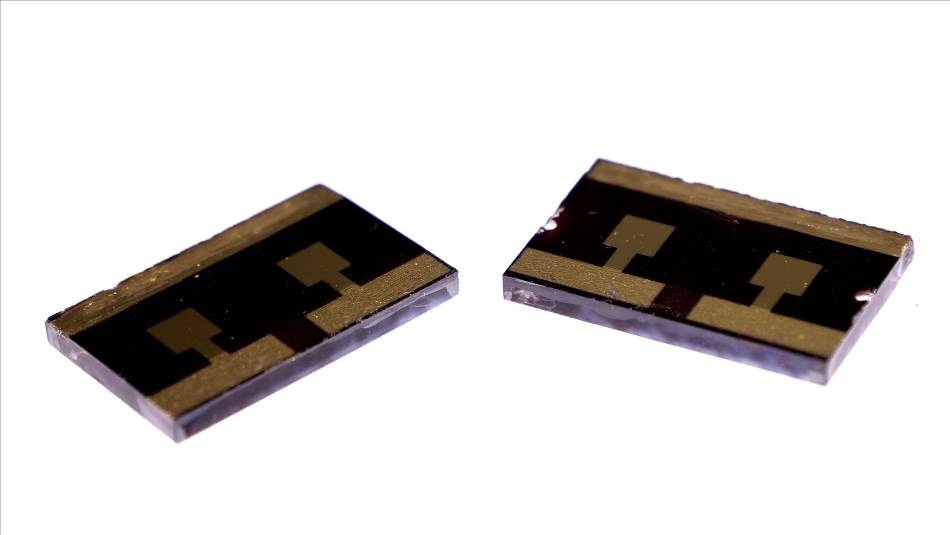Oct 12 2018
Scientists from the Adolphe Merkle Institute (AMI) at the University of Fribourg have built a new, more stable, extremely efficient next-generation perovskite solar cell, paving the way to future commercialization. The study was recently published in the October 11th issue of the journal Science.
 These new perovskite solar cells are more stable than their predecessors after swapping out methylammonium molecules (Photo: UniFR)
These new perovskite solar cells are more stable than their predecessors after swapping out methylammonium molecules (Photo: UniFR)
Scientists are progressively switching their efforts towards perovskite solar cells, one of the most favorable developments for photovoltaic energy.
In spite of their novelty, the efficiency of perovskite solar cells is already close to the ubiquitous silicon solar cells. The major roadblock to realizing this potential is long-term stability.
The materials used in PSCs can degrade in just hours, sometimes even minutes under normal light conditions or in a humid environment. It is a huge challenge for us to make them stable for years or even decades.”
Dr. Michael Saliba, Study Author
The most efficient perovskite solar cells have unstable methylammonium (MA) molecules, mostly because of their capacity to deliver high-performance values.
By swapping the organic MA with the inorganic elements cesium and rubidium, the scientists have demonstrated it is possible to avoid these unstable compounds while sustaining similar high efficiency. This allows for more steady solar cells, which is an important step towards ultimate commercial use.
These new perovskites can also harvest more sunlight, meaning they are more efficient and therefore more profitable. In addition, these new materials are compatible with flexible substrates, making them useful for a wide variety of applications.
Essentially, this sets perovskites on the path of becoming a profitable, long-term solution for a sustainable energy future. With small additional improvements, perovskite solar cells can become a commercial reality within a short time.”
Saliba, Photovoltaics Group Leader at AMI.
This research was done in partnership with the Hagfeldt group (Laboratory of Photomolecular Science) at the Federal Institute of Technology in Lausanne (EPFL).